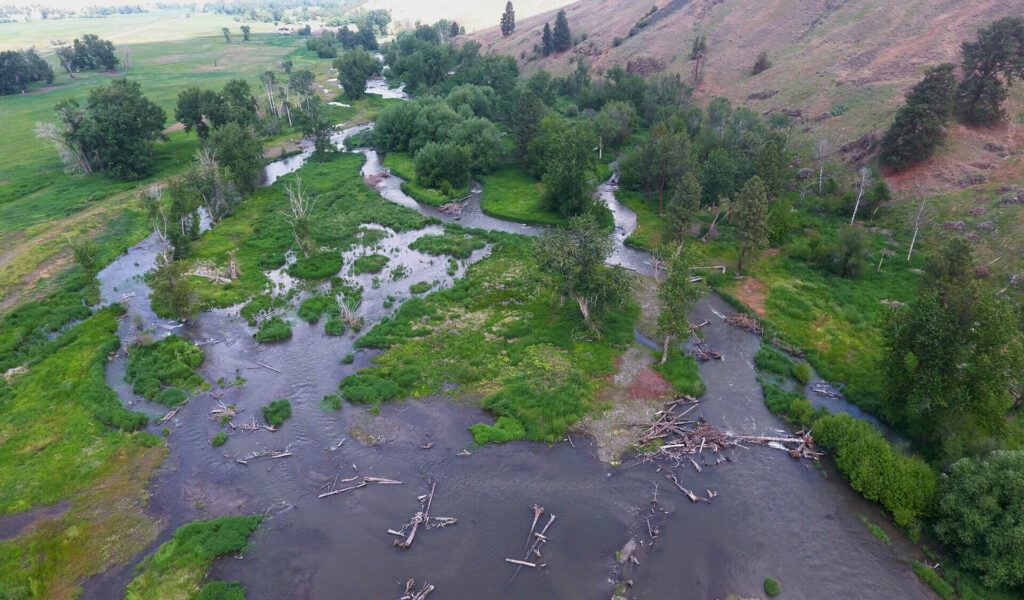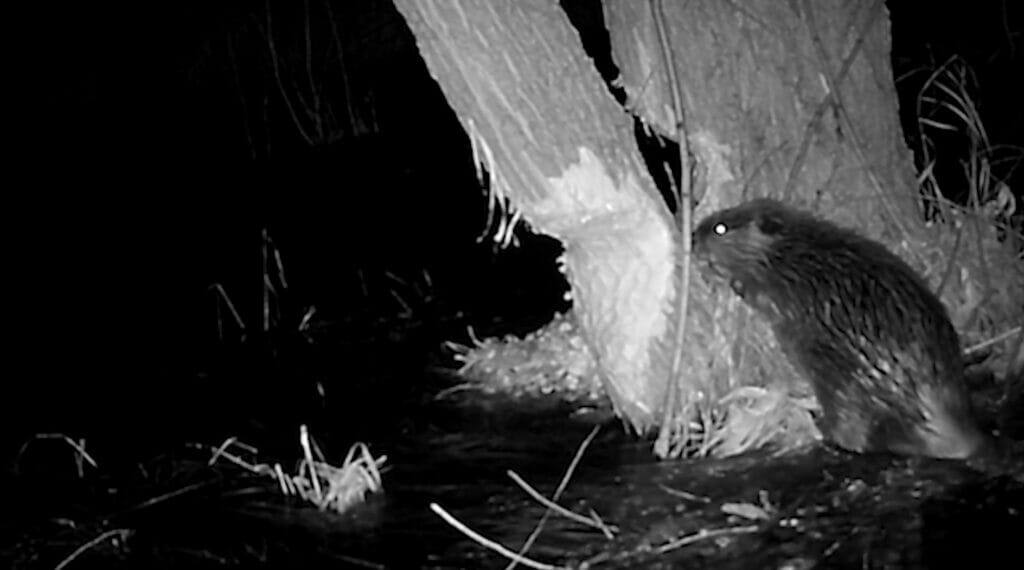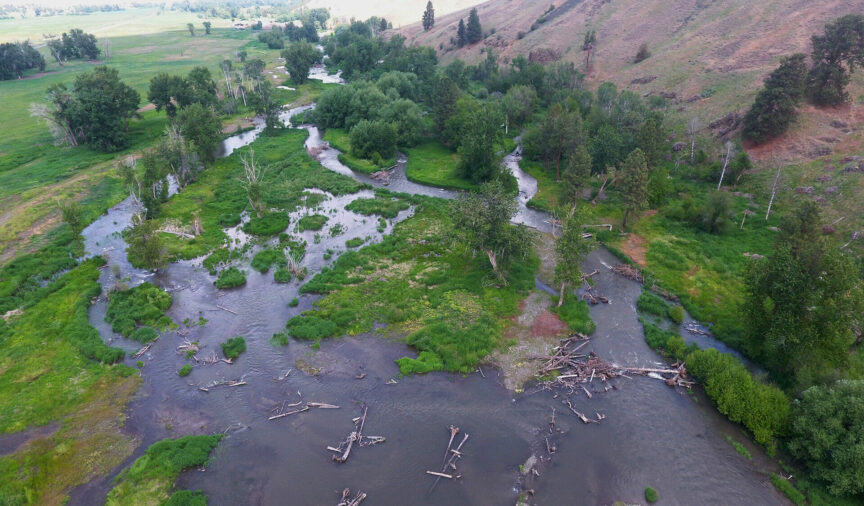
Northeast Oregon landowners partner with TU to restore salmon and steelhead habitat.
Ian Wilson is a dedicated angler, a fisheries biologist and a restoration project manager for the Grande Ronde Model Watershed. His wife Heidi is a dedicated conservationist who works for the local Wallowa Land Trust. They are the fifth generation to live on the Wilson-Haun family ranch in Northeast Oregon. The Wallowa River, a key tributary of the Grande Ronde River, runs through their property and is home to Chinook and coho salmon, Bull Trout, resident trout, Pacific Lamprey and summer steelhead. Today many of those species are struggling, including listings under the Endangered Species Act for Chinook, steelhead and Bull Trout.
Wilson has fished and studied the Wallowa for years and seen firsthand how changes to the landscape straightened and incised the river, limiting fish habitat and natural river processes. For a long time, he and Heidi dreamed of restoring the mile long stretch of the Wallowa encompassed by their family’s ranch.
Through his other restoration work in the region, Wilson got to know Levi Old, TU’s Northeast Oregon restoration director. Together, the pair designed and proposed an ambitious project using an innovative combination of low- and high-tech restoration techniques.
During the summer of 2022, in an intense burst of work involving earth moving equipment working alongside crews using hand tools, Wilson and his family partnered with Trout Unlimited to reconnect the Wallowa’s floodplain and restore important spawning and rearing habitat for native salmon, steelhead, resident trout, and Pacific Lamprey.
The project greatly increased habitat complexity, ecosystem function and the space available to fish, water and wildlife.
“A survey for salmon or steelhead redds on the Wallowa River behind our house used to take me around 45 minutes to an hour,” Wilson explains. “Following the restoration, it now takes half a day – and to be honest – wears me out,” he laughs.
The Wilson-Haun Wallowa River Project is celebrated in an inspiring new video produced by Tensegrity Productions for the Restoring Riverscapes project.
The Wallowa River Responded Immediately
For the Wilson-Haun project, crews dug side channels, placed nearly 500 logs, built over 50 beaver dam analog structures, and planted thousands of sedges, cottonwood and willow trees to restore the river’s natural floodplain function.
Now the Wallowa braids and meanders through the ranch. Instead of racing through this section, the water slows and spills out across the reconnected floodplain, creating important habitat for fish, birds, amphibians and other animals, and replenishing ground water in the process. The large logs and beaver dam structures sort gravel and create deep pools, perfect places for migrating salmon to rest and juvenile fish to escape high water and predators.
Soon after the work was complete, Wilson found Chinook salmon spawning in the restored section of river. He and his family have noticed more Great Blue Herons, waterfowl and songbirds, along with greater numbers of amphibians and dragonflies. They’ve recently seen a bobcat and a black bear along the river bottom. Game cameras have captured images of a beaver gnawing on a tree, a hopeful sign that beavers are returning to help maintain the habitat going forward.

Wilson continues to regularly fish the section of the Wallowa flowing through the ranch. As an angler, he has experienced the changes to the river firsthand.
“I have several memorable fishing experiences following the restoration project, including some of the more productive short sessions for trout that I have had in 25 years of fishing this stretch of river, which included several large trout and a quantity of trout that culminated in me walking away with little desire to catch another fish. The steelhead season following the restoration effort was no less impressive, leaving me in wonder of how these animals have evolved and the impressive journey they take.”
Levi Old is also pleased with how the project went and the lessons it offers for TU’s other work in Northeast Oregon watersheds. “Our local program sees the innovative restoration approaches used on the Wilson-Haun Project as a model to learn from moving into the future. Working with Ian, Heidi, and their family was wonderful, and we are thrilled to hear the ongoing stories of change on the landscape every time we speak with them.”
Project Partners and Volunteers:
Grande Ronde Model Watershed Council; Anabranch Solutions, Inc.; Plantworks, Inc.; Wildlands, Inc.; Nez Perce Tribe; Oregon Department of Fish and Wildlife; Bonneville Power Administration; Northwest Youth Corps; BCI Contracting; Bureau of Reclamation; National Fish and Wildlife Foundation; Northwest Youth Corp; Wolf Water Resources, Inc.; Wallowa Resources; and the US Forest Service.


